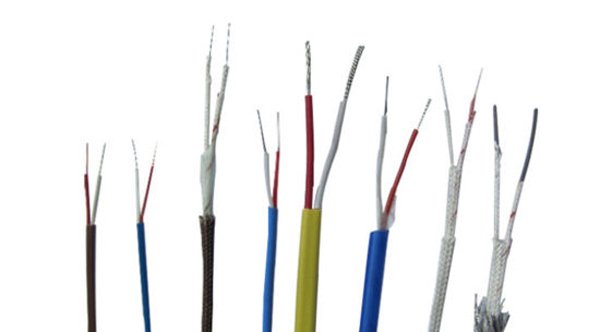We often voice complaints about inclement weather, but does bad weather truly exist? Could it be that our choice of attire makes the weather appear unfavorable? This underscores the importance of selecting the appropriate materials for cables, as they ensure durability by resisting high temperatures. Typically, most cable sheaths are constructed from polyvinylchloride (PVC), a cost-effective material that is resistant to corrosion, temperatures exceeding 100°C, and abrasion.
However, PVC falls short when faced with extremely high temperatures. Depending on the intensity of the heat, materials such as polyolefin copolymer, polytetrafluoroethylene, silicone, and fluoroethylene propylene are more suitable. These materials possess the capability to endure temperatures surpassing 200°C.

What are the characteristics of a high-temperature resistance cable?
Extreme high temperatures pose a significant risk to electric cables. To uphold the quality of high-temperature resistant wires, manufacturers ensure these wires possess specific characteristics tailored to their designated applications. Some notable features of high-temperature resistant wires include:
- The cables have insulation voltage.
- They are flame retardant and highly resistant to corrosion
- Most high-temperature resistant wires can work at a high temperature of up to 4000
- Special types of high-temperature-resistant wires can withstand temperatures up to 15000C, depending on their applications.
- The wires’ flexibility in different environments has zero temperature.
What to consider when selecting a high-temperature resistance cable
When selecting a high-temperature resistance cable;
- Consider cable that will withstand maximum operating temperature depending on its application.
- Consider the wire’s maximum current rating or ampacity at maximum temperature. You should note that high-temperature cables have a higher ampacity than standard electrical wires. This allows the high-temperature wires to operate within the high operating temperatures.
- Consider the cable’s level of flexibility and ability to resist abrasion and chemical corrosion.

Common types of high-temperature resistance cable
| High-temperature resistance wire | Characteristics |
| Silicone Insulated Wire | · Withstand temperatures up to 1800C and 2500C at short periods.
· Self-extinguishing and good flame-retardant · Resistant to abrasion · Examples; silicone rubber motor lead (SRML), silicon fixture (SF-2) wire, silicone rubber cable, |
| Teflon Glass Glass Teflon Wire (TGGT) | · Has a Polytetrafluoroethylene (PTFE) insulation
· Withstands temperatures up to 2500C |
| High-Temperature Mica Glass Wire | · Has Mica glass (MG) insulation
· Protects the cable from temperatures up to 4500C |
| Thermocouple Wires | · Withstands high temperatures up to 12600C
· Standard thermocouple types comprise Types E, J, K, N, R, and T. |
Conductor Material
From a scientific standpoint, pure copper is prone to corrosion under extreme temperatures. Therefore, a high-temperature resistant cable incorporates a conductor with superior resistance. Some of the conductors commonly utilized for high-temperature applications include:
- Tin-plated copper- It works best for temperatures up to 1800
- Nickel-plated copper- can work for high temperatures up to 4500
- Nickel wire- This conductor can withstand extremely high temperatures (above 4500C).
Applications of high-temperature resistance wires
High-temperature resistance cables serve a diverse range of applications, which depend on the specific field of use and associated requirements. Some applications necessitate a temperature resistance of just slightly above 200°C, while others demand wires capable of enduring extreme temperatures exceeding 1000°C.
Some of the fields of application for the high-temperature resistant wires include;
- Electric heaters
- Steel and metallurgy plant
- Extruder and dryers
- Glass and ceramic production
- Plastic molding plants
- Refineries
- Heating and air conditioning technology
- Weld robotic cells
Summary
High-temperature resistance wires can cater to any application involving temperatures exceeding 1500°C. When selecting one, it is advisable to examine the wire’s characteristics to ensure it meets your operating temperature requirements. Feel free to reach out to us with any questions or concerns you may have.